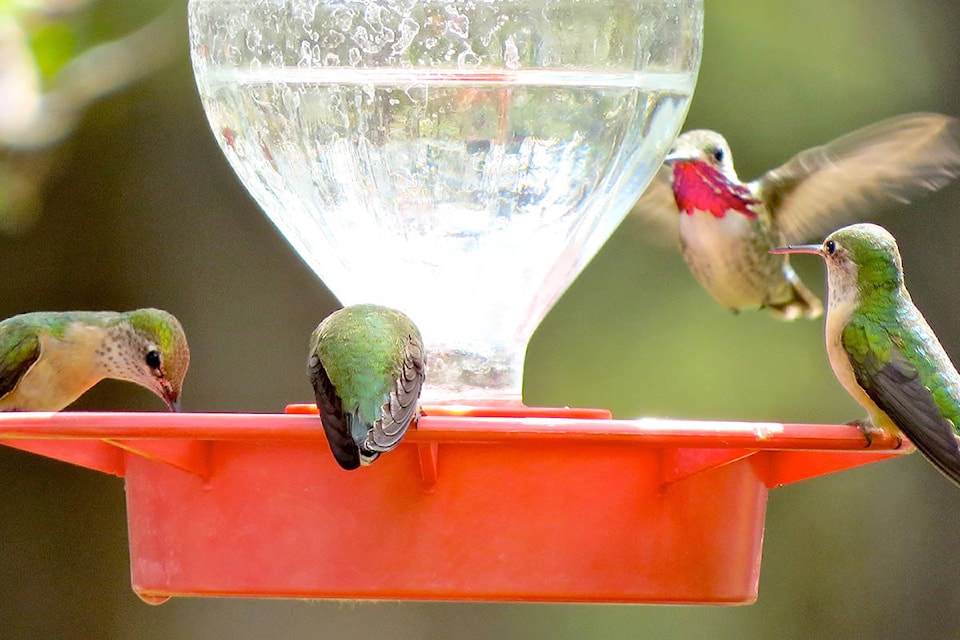Feeding wild birds is probably the most widely practiced interaction between humans and nature.
I’m just guessing but I suspect many more people put out bird feeders than go canoeing or hiking. It’s easy to do and can just as easily be done in a small urban backyard as on an acreage. But feeding seed mixtures to song birds can have a bit of a down side. It can be messy with seeds and seed hulls falling everywhere and in urban areas (such as Penticton) this debris can attract mice and rats. Putting out seed does not generally work well for those who live in condos or apartments, especially if they are above the ground floor.
However, even those living in small apartments can attract hummingbirds to their balcony with specialized nectar feeders. Hummingbirds are the most amazing little creatures to watch and generally will come to feeders in even busy locations. Hummers are attracted to red flowers, so try including a hanging basket by your feeder or tie some red ribbons on the feeder to attract their interest.
Hummingbirds are extremely active birds and therefore great fun to watch at the feeders. From their incredibly rapid wing-beat (20 to 75 times per second) to their crazy flight antics — hovering, backwards, forwards, up, down and even sideways — hummingbirds put on a great feeder show. Most hummers (especially males) become very possessive of their territory, including any feeder you may put out, so when another comes along, sparks can fly as the “owner” tries to dissuade the newcomer from feeding at his spot. Here in the Okanagan we fairly regularly get four species of hummingbirds: Calliope (the smallest), Rufous (the most aggressive around the feeders), Anna’s (the largest) and Black-chinned. Keep in mind that largest and smallest are relative!
Feeding hummingbirds is really easy but there are some rules to follow. Many studies have been done to see which type of sugar water mixture most nearly replicates natural nectar from flowers and the conclusion is that a four to one mixture of water to plain white table sugar is the best. Do not use brown sugar or turbinate sugar or honey in place of white sugar and never add red dye to your food mixture. You are not helping our little feathered friends if you do any of those things — in fact you are harming them. Do not buy the prepared mixture in the stores that has red dye in it — that is a hummingbird no-no! Simply boil some tap water, add ¼ cup of sugar for every cup of water, stir, cool and feed. Some people think that if ¼ cup of sugar is good then a ½ cup must be great. Not true. Stick with a four to one ratio or early in the season when it is cold out, you can use three to one but never less than that.
Hang the feeder in a convenient spot — at the edge of your balcony for instance — and enjoy the show. It is best not to let the “nectar” sit in the feeder more than about four days, especially when it is hot and sunny out as it can go moldy, causing harm and even death to the birds. I keep mine fresh by only using a small amount in the feeder and then washing it out with soap and water, rinsing it well and adding new mix every few days. Once mixed, you can keep the unused portion in the fridge for about two weeks. Once a month clean the feeder with a mild bleach solution.
The South Okanagan Naturalists’ Club’s monthly meetings resume on a regular basis on Sept. 28. In the meantime we have weekly birding trips (Thursday) and occasional field trips. If you would like to come along and learn about our club you can check out the activities by going to .



